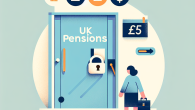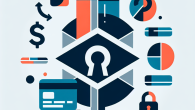
Could Better Regulation Have Saved People from the LCF Scandal?
The Truth Behind Hidden Bank Fees: What You Don’t Know Could Cost You
Let’s be honest — when was the last time you actually read your bank’s fee schedule? Never? Thought so. But don’t feel bad — you’re in good company. Banks are betting on that exact assumption. And as someone who’s spent the better part of two decades elbow-deep in financial policy and public advocacy (with two cups of strong black coffee always on hand), I can tell you this: what you don’t know about hidden bank fees might be quietly bleeding your wallet dry.
I’m Eleanor “Ellie” Cartwright — advocate, watchdog, and your personal translator of fine print. Buckle up, because we’re peeling back the curtain on how financial institutions artfully tuck away fees, why regulators are slow to intervene, and most importantly, what you can do to protect yourself.
What Are Hidden Bank Fees?
Hidden bank fees are charges that aren’t exactly “hidden,” legally speaking — they’re technically disclosed, just not in the clearest or most obvious way. These fees range from the mildly annoying to the outright shocking. You’ll usually find them buried in footnotes, cloaked in banking jargon, or slipped into pages 27–38 of your account agreement (you know, that thing everyone scrolls past and clicks “Agree”).
Here are some of the most common offenders:
- Monthly maintenance fees — Even when you haven’t done anything with your account.
- Overdraft fees — Sometimes charged even when your account shows a positive balance due to “pending transactions.”
- ATM usage fees — Both from your own bank and from the ATM operator.
- Foreign transaction fees — Often a nasty surprise when you’re traveling or shopping online internationally.
- Paper statement fees — Because apparently, reading your own transaction history is now a luxury service.
If these seem small — say, $3 here, $10 there — they add up fast. According to a report from the Consumer Financial Protection Bureau (CFPB), Americans paid over $15 billion in overdraft and NSF fees alone in one year. That’s billion, with a “B”.
Why Don’t Consumers Know About These Fees?
This part makes my blood boil — and I’ve seen a lot. Most banks are experts in obfuscation. Sure, the fees are “disclosed,” but often with just enough ambiguity to slip under your radar. Here’s how they get away with it:
- Legal language — The documents are so technical and dense, they might as well be written in Klingon.
- Passive presentation — Fees are not highlighted or flagged; they’re often bundled deep in digital documents you consent to in a rush.
- Auto-enrollment — Some services that trigger fees are automatically enabled unless you specifically opt out.
In my work advocating for fair disclosures, I’ve reviewed over a hundred bank fee schedules — you know what they all have in common? A strategic use of ambiguity, with just enough clarity to appease regulators, while keeping customers confused. It’s not just sneaky — it’s systemic.
How Regulators Are (and Aren’t) Responding
To their credit, agencies like the Consumer Financial Protection Bureau and the Federal Reserve have implemented rules to force some transparency. For example, the Truth in Savings Act requires banks to disclose fees associated with deposit accounts — but the key word here is disclose, not highlight.
In 2023, the Biden administration proposed rules under the banner of “junk fee prevention,” aiming to eliminate punitive overdraft charges and require clearer disclosures. But guess what? Banks and lobbyists pushed back hard, arguing it would reduce “access to financial services.” Translation: it would hurt their bottom line.
This is where people like me — and hopefully, readers like you — come in. Advocacy only works when consumers demand better, louder and more often.
7 Ways to Avoid Hidden Bank Fees
It’s not all doom and overdraft. There are practical, empowering steps you can take to minimize or eliminate hidden fees altogether. Here’s what I recommend:
- Choose a fee-free checking account — Look for banks or credit unions that explicitly state “no monthly maintenance fees” and stick to it.
- Opt out of overdraft protection — This might sound counterintuitive, but declining this “service” can save you $35 per accidental misstep.
- Use in-network ATMs — Save yourself from double-dipping ATM fees by sticking with your bank’s partners.
- Go paperless… if you want — Unless you really love those crisp statements on recycled tree bark.
- Monitor your account weekly — Use mobile alerts for low balances or large transactions — knowledge is (fee-saving) power.
- Ask questions — When opening an account or getting suspicious charges, challenge the bank. Many fees are reversed if you’re persistent.
- Support legislation for financial transparency — Contact your representatives and support proposals that make banks actually play fair.
The Advocacy Angle: Your Voice Is Your Weapon
It’s not just about avoiding a $7 fee here or a $35 charge there (though that certainly helps). This is about pushing back on an entire industry that profits when its customers don’t pay attention. And if there’s anything I’ve learned from promoting consumer finance legislation through three different administrations, it’s this: companies change when consumers demand it.
Joining financial literacy groups, writing to public officials, even sharing your stories on platforms that elevate consumer complaints — it all adds up. You have more power than you think, and it starts with knowing where your money is going.
Final Thoughts: Don’t Settle for the Bare Minimum
Listen: being financially savvy doesn’t mean becoming paranoid or reading every page of fine print under a desk lamp like you’re investigating a conspiracy (though, frankly, I support that energy). It means being proactive, informed, and unafraid to ask hard questions. Hidden bank fees aren’t just a nuisance — they’re a symptom of deeper issues in financial transparency and ethics.
I’m not here to scold you — I’m here to tell you that you’re not alone, and that there are people fighting for your right to clear, honest banking. And yes, I’m one of them. If you ever need to talk fees, policy, or just need a good old financial rant, you know where to find me.
Until then, check those fee schedules, read the tiny print, and don’t let your bank nickel-and-dime you in silence.
Need more support or want to share your own consumer advocacy story? Visit our About Us page to learn more or head to our Contact page to reach out. We’re here to listen — and we bite back when needed.









Leave a Reply